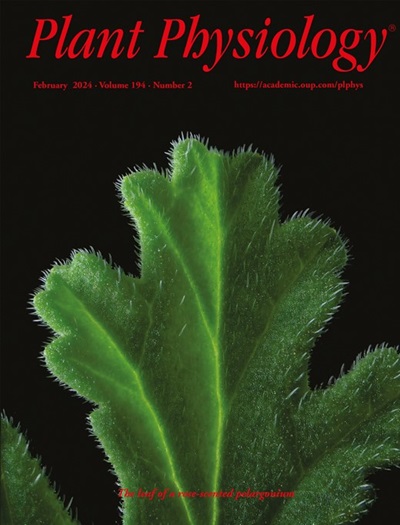Functional characterization of the N assimilation pathways in the mycelium of Laccaria bicolor and the ectomycorrhizal symbiosis
IF 6.5
1区 生物学
Q1 PLANT SCIENCES
引用次数: 0
Abstract
Ectomycorrhizal (ECM) fungi contribute to N, Pi, and water uptake in trees while obtaining carbohydrates from their host plants. However, the molecular mechanisms underlying N assimilation during ECM symbiosis remain unclear. In this study, we used RNA interference (RNAi) to silence the expression of genes encoding glutamine synthetase (GS) and NADP-glutamate dehydrogenase (GDH), which are key enzymes involved in N assimilation in the ectomycorrhizal basidiomycete, Laccaria bicolor. LbGS and LbGDH RNAi strains exhibited significantly reduced mycelial growth when cultivated with various inorganic N sources. Compared to the wild-type mycelium, the RNAi strains demonstrated a reduced formation rate of ECM rootlets, indicating the essential role of these two enzymes in the establishment of symbiosis. Transcriptomic analysis revealed that silencing of LbGS and LbGDH also altered the expression of other genes involved in N metabolism in ECM rootlets. 15N and 13C tracer experiments demonstrated that LbGS silencing affects carbon exchange in ECM roots. Our findings have established that both GS and NADP-GDH pathways play crucial roles in N assimilation in free-living mycelia and ECM roots, although the GS/GOGAT pathway appears to be predominant.双色拉毛菌菌丝体与外生菌根共生N同化途径的功能表征
外生菌根(ECM)真菌在从寄主植物获取碳水化合物的同时,促进树木对N、Pi和水分的吸收。然而,ECM共生过程中N同化的分子机制尚不清楚。在本研究中,我们利用RNA干扰(RNAi)沉默了外生菌根担子菌双色拉卡菌中参与氮同化的关键酶——谷氨酰胺合成酶(GS)和nadp -谷氨酸脱氢酶(GDH)的基因表达。不同无机氮源培养的LbGS和LbGDH RNAi菌株菌丝生长均显著降低。与野生型菌丝体相比,RNAi菌株的ECM根的形成率降低,表明这两种酶在建立共生关系中起着至关重要的作用。转录组学分析显示,LbGS和LbGDH的沉默也改变了ECM根中参与N代谢的其他基因的表达。15N和13C示踪试验表明,LbGS沉默会影响ECM根系的碳交换。我们的研究结果表明,尽管GS/GOGAT途径似乎占主导地位,但GS和NADP-GDH途径在自由生活的菌丝和ECM根的氮同化中都起着至关重要的作用。
本文章由计算机程序翻译,如有差异,请以英文原文为准。
求助全文
约1分钟内获得全文
求助全文
来源期刊

Plant Physiology
生物-植物科学
CiteScore
12.20
自引率
5.40%
发文量
535
审稿时长
2.3 months
期刊介绍:
Plant Physiology® is a distinguished and highly respected journal with a rich history dating back to its establishment in 1926. It stands as a leading international publication in the field of plant biology, covering a comprehensive range of topics from the molecular and structural aspects of plant life to systems biology and ecophysiology. Recognized as the most highly cited journal in plant sciences, Plant Physiology® is a testament to its commitment to excellence and the dissemination of groundbreaking research.
As the official publication of the American Society of Plant Biologists, Plant Physiology® upholds rigorous peer-review standards, ensuring that the scientific community receives the highest quality research. The journal releases 12 issues annually, providing a steady stream of new findings and insights to its readership.
 求助内容:
求助内容: 应助结果提醒方式:
应助结果提醒方式:


